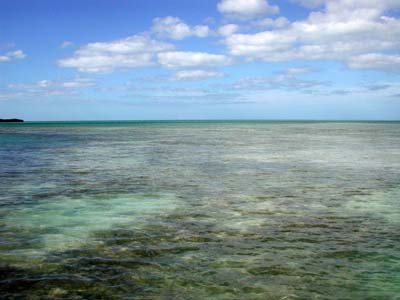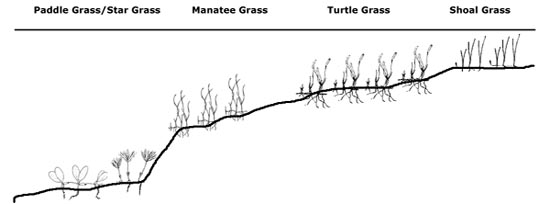Zonation is determined by:

- Salinity
- Light
- Air Exposure
Environmental factors affecting seagrass distribution include salinity, light, and air exposure. There is a general pattern of seagrass distribution in the clear waters of Florida and the Caribbean. Shoal grass (Halodule wrightii) is found in the shallowest waters since it tolerates exposure and high salinities better than other seagrasses. Turtle grass (Thalassia testudinum) is next, living at depths nearly as shallow as shoal grass. At depths greater than 40 feet (12 m), manatee grass (Syringodium filiforme) replaces turtle grass, forming large meadows. Star grass(Halophila engelmanni) and paddle grass (Halophila decipiens) may occur in areas deeper than 130 feet (40 m), but only in locations where there is enough sunlight to support photosynthesis.

Glossary terms on page
- salinity: concentration of total salts dissolved in water, usually measured in parts per thousand.
- photosynthesis: process of making chemical compounds using light for the energy, plants get their energy from photosynthesis by using chlorophyll converted with carbon dioxide and water to produce carbohydrates and release oxygen.